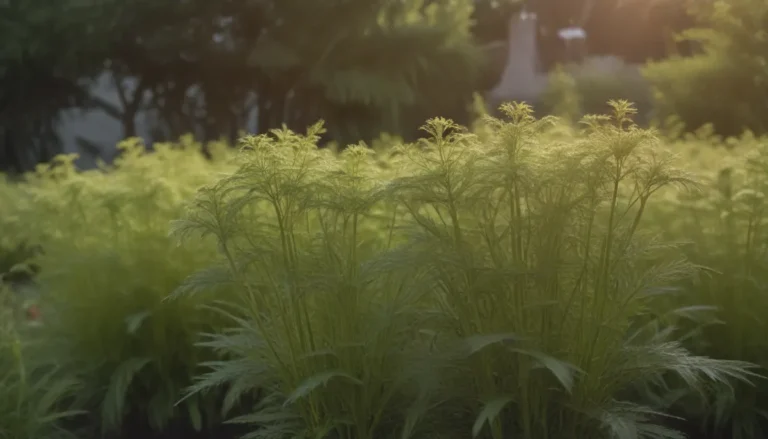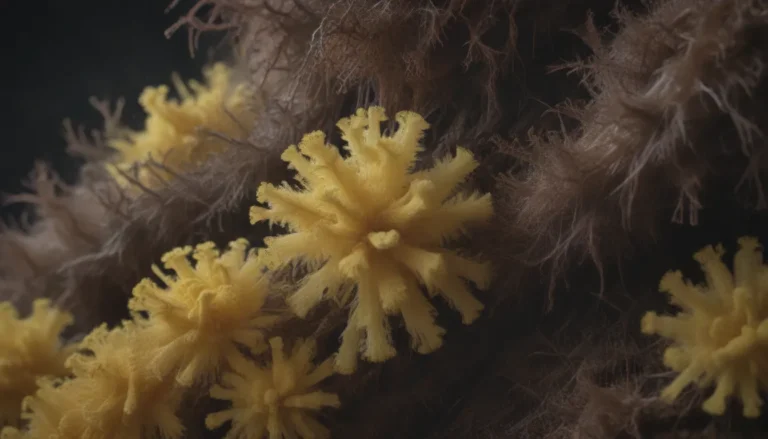The Ultimate Guide to Growing and Caring for Blue Atlas Cedar Trees

Welcome to our comprehensive guide on how to grow and care for blue Atlas cedar trees! Blue Atlas cedar trees are truly unique and eye-catching evergreens that can add a touch of elegance to any landscape. With their distinctive drooping branches, blue needles, and small cones, these trees are a standout choice for gardeners looking to enhance their outdoor space.
In this article, we will delve into everything you need to know about blue Atlas cedar trees, from planting and watering to pruning and propagation. Whether you’re a seasoned gardener or a newbie looking to add a touch of sophistication to your yard, this guide has got you covered. So grab a cup of tea, sit back, and let’s dive into the wonderful world of blue Atlas cedar trees.
What Makes Blue Atlas Cedar Trees Special?
Blue Atlas cedar trees (Cedrus atlantica) are prized for their striking appearance and easy care requirements. Here are a few key features that make them stand out in the world of evergreens:
- Distinctive Appearance: Blue Atlas cedar trees are known for their drooping, twisted branches, 1-inch blue needles, and small upright cones that appear in spring.
- Growth Rate: These trees have a slow-to-moderate growth rate, typically growing 1 to 2 feet per year.
- Ideal Conditions: Blue Atlas cedar trees thrive in full or partial sun, well-drained acidic soil, and USDA hardiness zones 6 to 9.
Now that we’ve covered the basics, let’s explore how you can ensure your blue Atlas cedar tree thrives in your garden or landscape.
Blue Atlas Cedar Care Tips
Light
To keep your blue Atlas cedar tree healthy and thriving, make sure to plant it in a sunny spot that receives at least six to eight hours of sunlight per day. While these trees can tolerate some shade, they should never be planted in full shade.
Soil
Blue Atlas cedar trees prefer well-drained, slightly acidic soil, but they can also adapt to neutral or slightly alkaline soils. Make sure to plant your tree in an area with deep, wide soil to accommodate its deep roots and expansive branches.
- Soil Mixtures: Blue Atlas cedar trees can thrive in various soil types, including loamy, sandy, or clay soils, as long as the soil doesn’t retain too much moisture.
Water
During the first year after planting, your blue Atlas cedar tree will need consistent and deep watering to help its roots become established. Once the tree is established, it becomes fairly drought tolerant but may still require watering during hot or dry weather.
- Pro Tip: Water your blue Atlas cedar tree with some frequency if the weather has been particularly hot or dry to ensure its health and vitality.
Temperature and Humidity
Blue Atlas cedar trees thrive in moderate conditions found in USDA hardiness zones 6 to 9. While they can withstand a range of temperature and humidity levels, it’s essential to protect young trees from exposure to strong winds, which can damage their branches.
- Expert Advice: Shelter young blue Atlas cedar trees from strong winds with screens or burlap tents to prevent limb damage.
Fertilizer
While not essential for growth, blue Atlas cedar trees can benefit from a balanced fertilizer applied at the beginning of the growing season each spring. Follow the instructions on the product packaging to determine the right amount for your tree.
- Trivia: Blue Atlas cedar trees are low-maintenance overall, making them an excellent choice for beginner gardeners looking for a stunning yet easy-to-care-for tree.
Types of Blue Atlas Cedar Trees
Blue Atlas cedar trees come in various cultivars that offer unique colors and shapes. Here are some popular types to consider:
- Cedrus atlantica ‘Argentea’
- Cedrus atlantica ‘Aurea’
- Cedrus atlantica ‘Fastigiata’
- Cedrus atlantica ‘Glauca’
- Cedrus atlantica ‘Glauca Pendula’
If you live in a climate colder than zones 5 or 6, consider “false” cedars from the Calocedrus, Thuja, and Chamaecyparis genera, such as Chamaecyparis obtusa (Hinoki false cypress). These trees have similar growth habits to Cedrus atlantica but are hardy down to zone 4.
Pruning Blue Atlas Cedar Trees
Blue Atlas cedar trees can be pruned to achieve various shapes such as cones, ovals, cylinders, or weeping shapes. While it’s best to avoid excessive pruning that disrupts the tree’s natural shape, light pruning can help maintain its appearance.
- Pro Tip: Prune your blue Atlas cedar tree in early spring before new growth starts for the season, and avoid removing more than a third of the tree’s density.
Propagating Blue Atlas Cedar Trees
Propagating blue Atlas cedar trees can be challenging, but many gardeners successfully grow new trees from seeds harvested from mature cones. Here’s how you can grow blue Atlas cedar trees from seed:
- Collect ripened cones from mature trees in the fall.
- Freeze the cones until the scales begin to open.
- Plant the seeds in well-drained soil and water regularly until they germinate.
Potting and Repotting Blue Atlas Cedar Trees
Blue Atlas cedar trees are best suited for planting in the ground as they can grow quite large. If you’re growing a young tree in a container, transplant it into the ground after its second winter in the pot to ensure its long-term health and growth.
- Insider Tip: Choose a planting location where your blue Atlas cedar tree can thrive for its entire lifespan, as these trees do not transplant well once established.
Overwintering Blue Atlas Cedar Trees
Blue Atlas cedar trees within their hardiness range typically do not require cold protection during winter. However, young trees may need shelter from harsh winds and heavy snow. Consider using burlap screens or tents to protect them from winter weather.
- Winter Care: Shake off snow from branches to prevent breakage, and use wire cages to protect young trees from browsing deer during the winter months.
Common Pests & Plant Diseases
Blue Atlas cedar trees are relatively pest and disease-resistant, making them a low-maintenance choice for your landscape. However, if you notice pest issues, such as scale insects or sapsuckers, take action to protect your tree’s health.
- Friendly Reminder: Address fungal diseases like tip blight promptly by shaking affected branches and applying fungicides as needed to prevent further spread.
Common Problems With Blue Atlas Cedar Trees
While blue Atlas cedar trees are generally easy to grow and care for, you may encounter a few challenges along the way. Here are some common problems and solutions:
Sparse Growth
Young blue Atlas cedar trees may appear sparse and unappealing initially, but this is a natural part of their growth. Avoid pruning excessively and allow the tree to develop its full, picturesque shape over time.
Brown Branches or Needles
If you notice brown branches or needles on your tree, it may indicate root rot caused by overly moist soil. Adjust your watering practices to allow the roots to dry out between waterings and promote tree health.
- Final Thoughts: Blue Atlas cedar trees are long-lived beauties that can grace your landscape for decades, so give them the care and attention they deserve to thrive and flourish.
Planting Tips for Blue Atlas Cedar Trees
When planting your blue Atlas cedar tree, keep the following tips in mind:
- Choose a spacious, open area with adequate room for the tree’s mature size.
- Plant in well-drained soil that suits the tree’s preferences for acidity and moisture levels.
- Consider companion plants that thrive in partial shade and acidic soils, such as evergreen shrubs and perennials.
By following these planting tips and care guidelines, you can enjoy the beauty and elegance of blue Atlas cedar trees in your landscape for years to come.
Conclusion
Congratulations on making it through our ultimate guide to growing and caring for blue Atlas cedar trees! We hope you’ve gained valuable insights and practical tips for nurturing these stunning evergreens in your own garden or landscape. Remember to prioritize proper planting, watering, and maintenance practices to ensure your blue Atlas cedar tree thrives and flourishes for years to come.
If you have any questions or need further assistance with your blue Atlas cedar tree care, don’t hesitate to reach out to your local nursery or gardening expert for personalized advice. Happy gardening, and may your blue Atlas cedar tree bring joy and beauty to your outdoor space!
By following these comprehensive care guidelines and tips, you can cultivate a thriving blue Atlas cedar tree that will captivate with its unique beauty and grace. Enjoy the journey of nurturing and growing this magnificent evergreen in your landscape!





